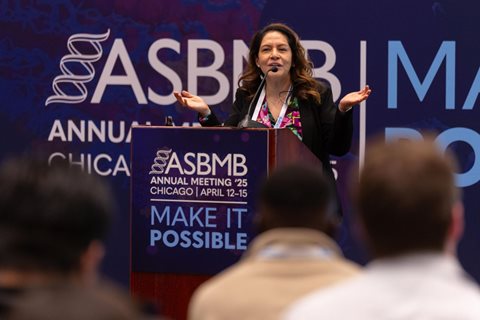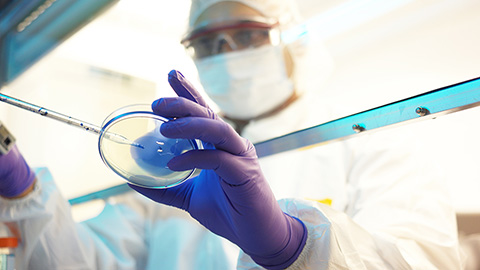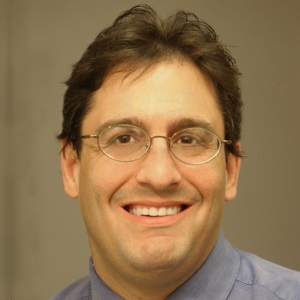Research for all: a CURE for undergraduates
The time that many of today’s scientists spent in the lab as undergraduates, and the opportunity they had to experience the frustrations and joys of research alongside senior scientists, likely had a powerful impact on their career choices. The lab apprentice model remains an excellent approach to providing critical mentorship and research experiences for budding scientists. But these days undergraduate demand for research positions far exceeds supply.

A potential solution to this problem has arisen over the past several years in the form of course-based undergraduate research experiences, or CUREs. These classes have increased the number of students involved in original research while reducing the burden on faculty to provide one-on-one experiences for all students.
CUREs can take a variety of forms. They can be semester-long lab classes or contain a lab unit that lasts just a few weeks. However they’re designed,all require that for some portion of the course students develop hypotheses, investigate unknown questions and participate in original research.
The influence and integration of CUREs have been growing for years. There are several very successful models and a growing body of scholarly research into the effectiveness of CUREs as a teaching pedagogy.
This fall, the American Society for Biochemistry and Molecular Biology put together a think tank meeting to discuss the state of CUREs in biochemistry and molecular biology. The meeting was a part of the society’s National Science Foundation-funded Research Coordination Network Undergraduate Biology Education grant. J. Ellis Bell, the project’s principal investigator, led the meeting.
Participants included scientists who are involved in implementing CUREs at the institutional level; doing discipline-based educational research; or implementing CUREs at community colleges, primarily undergraduate institutions and research-intensive institutions. The participants discussed the following topics.
Definition of a CURE
Several elements are critical to ensuring a CURE provides a real research experience and is distinguishable from other laboratory experiences (See Auchincloss, L.C., et al. 2014, Spell, Rachelle M., et al. 2014, and Lopatto, D. 2003).
CUREnet is a network of people and programs creating CUREs. Based at the College of Natural Sciences at the University of Texas at Austin, they define a CURE as:
- The use of scientific practices (asking questions, building hypothesis, designing studies and communicating).
- The discovery of unknown questions, differing from inquiry where the answer is known to the instructor but not the student.
- Work that is broadly relevant or important to a community and could potentially become a research publication.
- Collaboration. Science is not conducted in a vacuum, so CURE students should work collaboratively to reflect the best practices of scientific research.
- Iteration to build upon earlier work and advance questions.
Model CUREs
In addition to those educators who are independently developing CUREs, who are a part of CUREnet, or who are publishing in education journals, several institutions have developed unique means of providing CUREs to large numbers of students. For example, the Howard Hughes Medical Institute has a project called Science Education Alliance Phage Hunters Advancing Genomics and Evolutionary Science, which involves many institutions and thousands of students. The University of Maryland at College Park also offers CUREs in many different disciplines to firstyear students through their First-Year Innovation and Research Experience, or FIRE.
Barriers to broad implementation
The impressive growth and success of these projects have provided a stable and sustainable platform to broaden research access for many students. However, there are significant barriers for faculty and institutions to adopt or participate in CUREs.
One barrier is developing the support network critical to sustaining a CURE. Many biochemistry CUREs operate as silos. Sharing ideas, supporting projects and collaborating on authentic research for CUREs could help reduce the strain of independently adopting and maintaining CUREs.
While several large-scale CUREs for molecular biology and microbiology exist, there aren’t enough well-supported, sustainable, protein-centered biochemistry/biophysical CURE projects. There also are not enough entry-level biochemistry and molecular biology CUREs that are adoptable for community colleges and freshman and sophomore classes.
Finally, institutions can feel challenged to implement CUREs because of the demands on time and funding.Some CURE developers have created easily adoptable kits that are available through commercial sources and that provide support to institutions and faculty. For example, A. Malcolm Campbell at Davidson College in Davidson, N.C., and Todd Eckdahl at Missouri Western State University in Saint Joseph, Mo., adapted their synthetic biology CURE into a kit available through Carolina Biological Supply Company.
Research for all
We have strong evidence of the motivational and learning gains made through CUREs. We know that conducting research in the teaching laboratory is much more involved than traditional lab experiences or inquiry labs. But it is also much more fun for the students and for the faculty! When we give CUREs a try, we givemore students access to an important tool that can help them feel like true scientists.
Enjoy reading ASBMB Today?
Become a member to receive the print edition four times a year and the digital edition monthly.
Learn moreFeatured jobs
from the ASBMB career center
Get the latest from ASBMB Today
Enter your email address, and we’ll send you a weekly email with recent articles, interviews and more.
Latest in Careers
Careers highlights or most popular articles

Building the blueprint to block HIV
Wesley Sundquist will present his work on the HIV capsid and revolutionary drug, Lenacapavir, at the ASBMB Annual Meeting, March 7–10, in Maryland.

Upcoming opportunities
Present your research alongside other outstanding scientists. The #ASBMB26 late-breaking abstract deadline is Jan. 15.

Designing life’s building blocks with AI
Tanja Kortemme, a professor at the University of California, San Francisco, will discuss her research using computational biology to engineer proteins at the 2026 ASBMB Annual Meeting.

Upcoming opportunities
#ASBMB26 late-breaking abstract submission opens on December 8. Register by Jan. 15 to get the early rate on our Annual Meeting.

Make your abstract stand out
Ensure your research is impossible to overlook. Get quick, practical reminders for crafting an abstract that attracts readers and helps you build connections at the conference.

Inside industry postdocs
As more Ph.D. scientists look beyond academia, industry postdocs offer a new kind of training, where mentorship meets mission-driven research. Fellows at Pfizer and Genentech share how these programs prepare them to translate discovery into impact.

